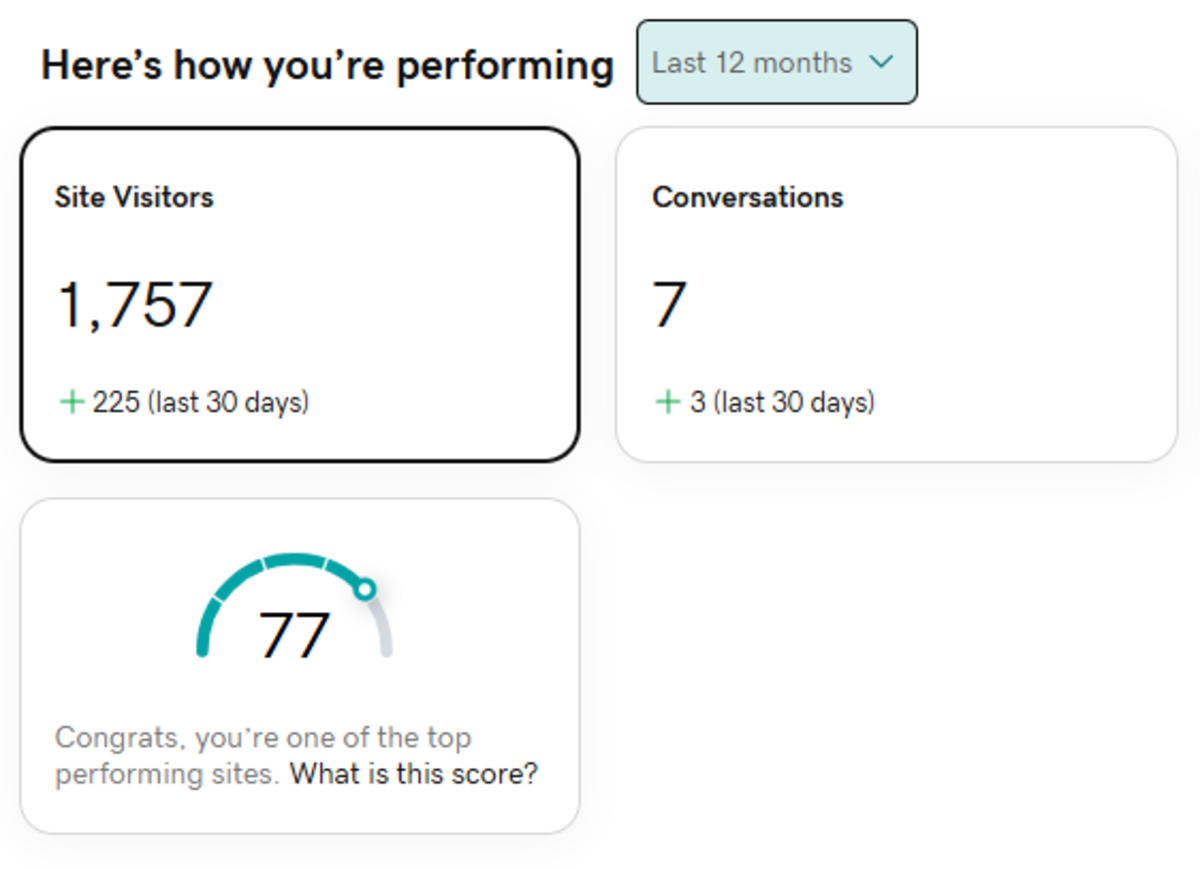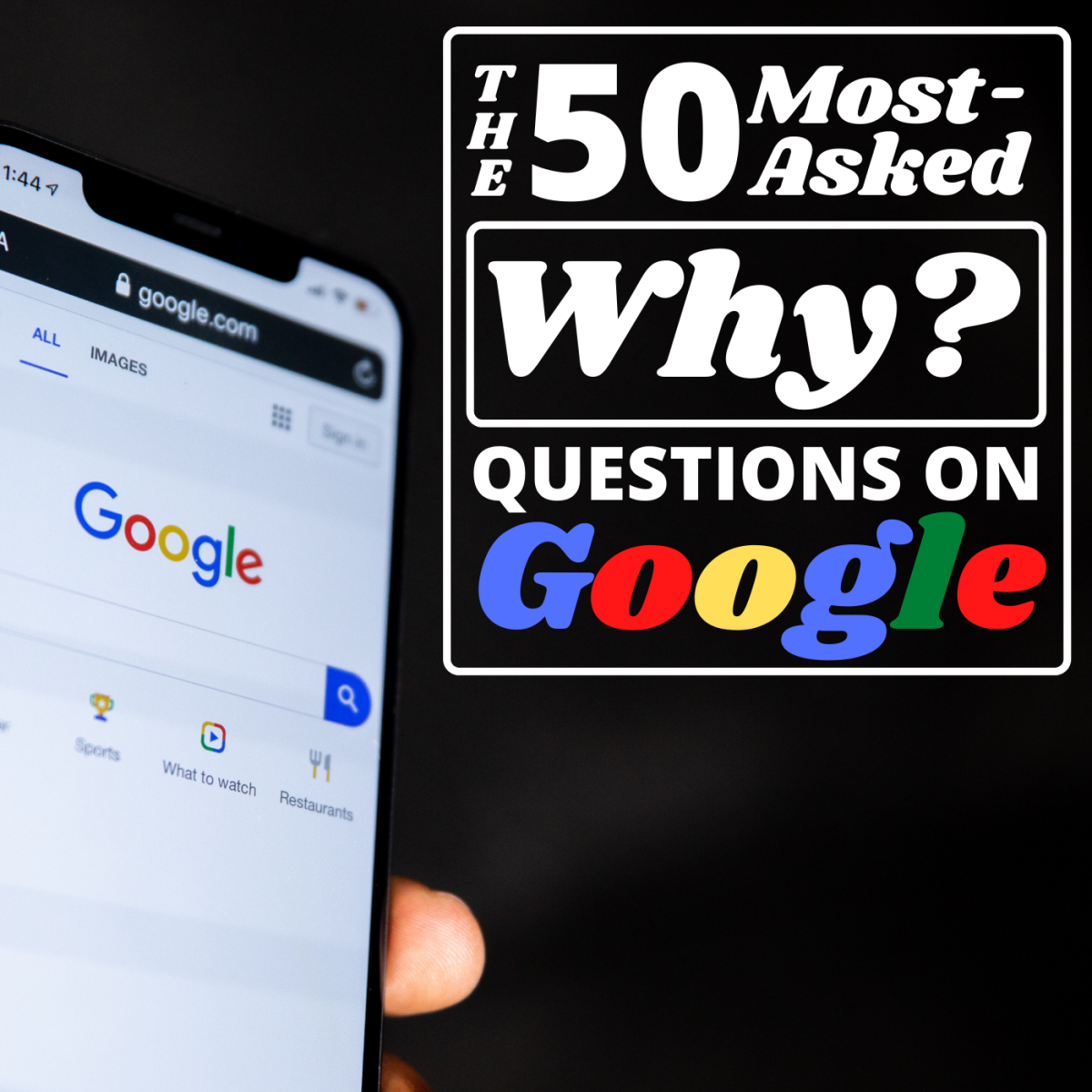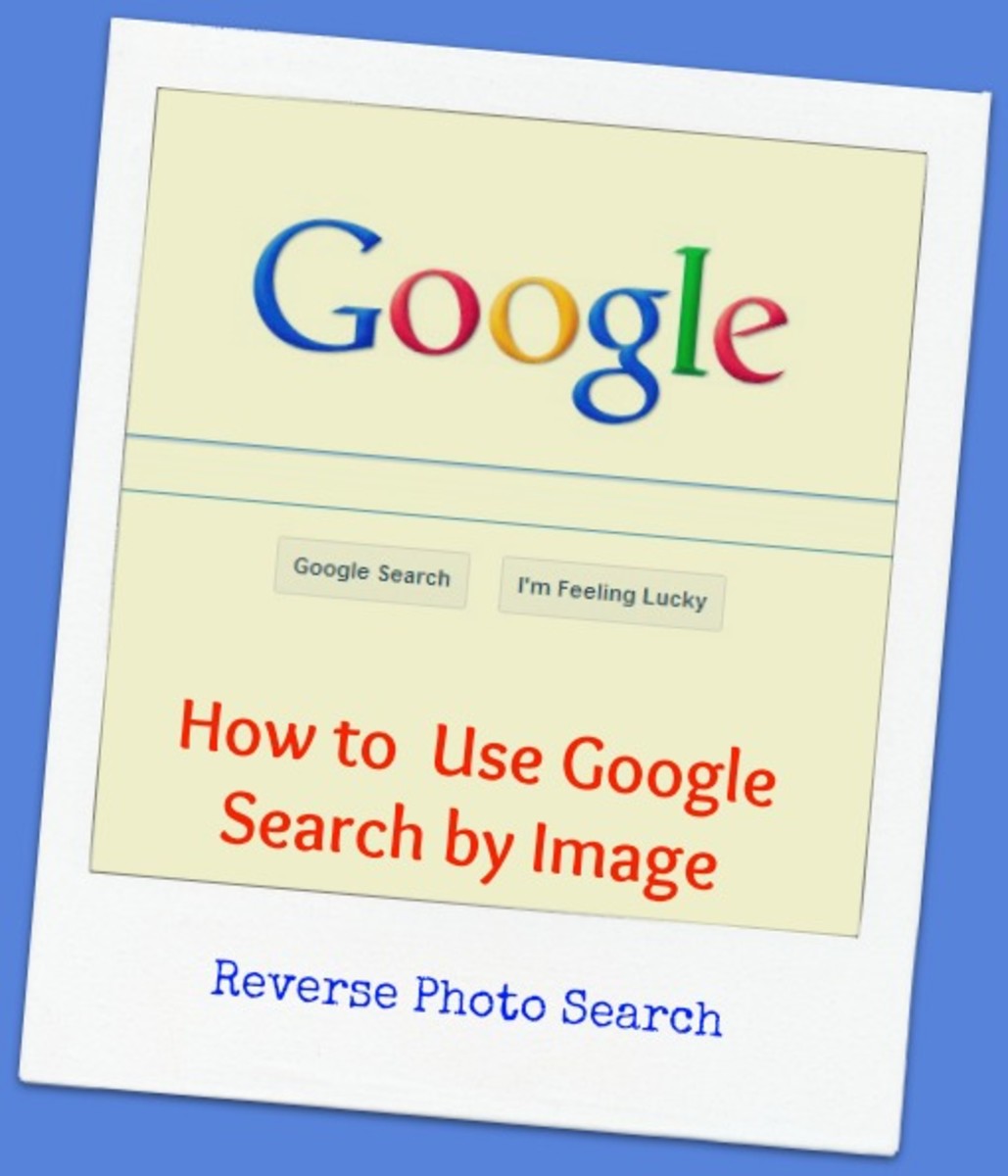- HubPages»
- Technology»
- Internet & the Web»
- Search Engines
A Guide to Google PageRank

A Guide To Google PageRank
If you’ve spent time investigating Search Engine Optimisation then you will have noticed that the topic of Google PageRank pops up with the predictable regularity of a well engineered Swiss watch. So, in line with tradition this article provides a brief overview PageRank, what it is, what it isn’t and some useful guidelines to help ensure PageRank is maximised and flows throughout your website without hindrance.
What Is PageRank?
PageRank relies on the uniquely democratic nature of the web by using its vast link structure as an indicator of an individual page’s value. In essence, Google interprets a link from page A to page B as a vote, by page A, for page B. But, Google looks at more than the sheer volume of votes, or links a page receives; it also analyzes the page that casts the vote. Votes cast by pages that are themselves “important” weigh more heavily and help to make other pages “important.” Source Google.
PageRank or PR is a measure of importance Google applies to every web page maintained in its index. The higher the PageRank the more important a page is. PageRank is calculated in the absence of a search query and, contrary to what you might read elsewhere, has very little influence on search engine rankings.
Importance, as far as PageRank is concerned, should not be confused with relevance otherwise high PageRank pages like Google’s index page would top search engine results pages for every search regardless of the original query. Nor is PageRank influenced by on page elements and tags such as Page Titles, Heading Tags, length of copy, semantics or anchor text.
PageRank values are completely governed by inbound and outbound links from and to pages within the same domain and those of external domains.
Why Is PageRank Important
PageRank on its own, like many other metrics that influence rankings, offers only minor benefits. To gain top search engine rankings many different metrics have to be considered along with PageRank. Because PageRank has nothing to do with relevancy it sort of stands out on its own. The following calculation illustrates how PageRank influences rankings:
Ranking Score = Relevancy Score * PageRank Score
Even at first glance it is pretty easy to see how low relevancy high PR pages could outrank highly relevant low PR pages. This would indeed lower the quality of Google’s results so to combat this the calculation probably looks more like this.
Ranking Score = Relevancy Score * (PageRank Score/100)
Even with a dampening factor applied when two pages with identical relevancy are scored the one with the highest PageRank will come out on top and outrank the other in Google’s SERPs.
PageRank forms a major part of link analysis. Link analysis is used by search engines to detect link spam, hub sites, authority sites and neighborhoods, it is therefore important to ensure its effective distribution through your website. Moreover, by sculpting the way PR flows through a website can encourage Google to spider your most important or regularly changing pages more frequently.
How Do You Check PageRank?
The simplest way to compare the relative PageRank of your pages with related pages or those of competitors is to install the Google Toolbar (toolbar.google.com). Once installed the toolbar will show PageRank from the Google data center supplying your results, however the server Google chooses to deliver your search results can change depending on load and geographic location. If you wish to inspect PageRank over multiple data centers there are a few tools like http://www.seocentro.com/tools/search-engines/pagerank-dc.html rhat will allow you to do this.
There is much speculation that the option to view PageRank in the toolbar will be removed in the near future. Within Google´s Webmasters tools the PageRank distribution feature found on the crawl stats section under "Diagnostics," has already gone. Google had this to say about its removal:
We've been telling people for a long time that they shouldn't focus on PageRank so much; many site owners seem to think it's the most important metric for them to track, which is simply not true. We removed it because we felt it was silly to tell people not to think about it, but then to show them the data, implying that they should look at it. :-)
How Is PageRank Calculated
The PageRank of any webpage is based on a calculation that takes into account the number of pages that link to it and the PageRank of those pages. PageRank is calculated on a page by page basis therefore each page on the web has its own value which, when viewed in the Google Toolbar, can be anything from 0 to 10.
Although the Google Toolbar PageRank is only be updated every 3 months or so, actual PageRank is dynamic and is recalculated every time Google discovers a new link or one is dropped. Google constantly spiders the web by following the links that connect web pages and by doing so not only maps out the web on a page by page basis but also how those pages are connected. In a very basic sense the most important pages (those with the highest amount of links pointing to them) are awarded the highest PageRank.
There is however more to PageRank than simply counting the number of links that point to a page, although this aspect does reflect the democratic nature of the system where a link from Page A to Page B counts as a vote for Page B. One also has to take into account the PageRank of the page casting the vote and the amount of links on that page. So a PR2 page with 5 links is going to channel more page rank through each link than a PR3 page with 10 links on it. In short the amount of PR passed through each link is based on the PageRank of the page divided by the number of links on the page.
If you were to add up all the PageRank available to a website prior to any inbound links being placed it would be equal to the number of pages in the site * 1. This amount is decreased with every outbound link to another website, remember PageRank is channelled through links so every outbound link draws PageRank away from a site. Conversely, this number can be increased by gaining inbound links from other sites.
Finally there is a damping factor; this part of the PageRank algorithm represents the likelihood that an imaginary surfer engaged in randomly clicking links will eventually stop. The damping factor adjusts derived PageRank values downward.
The PageRank calculation is rather complex, so I do not intent to go into the mathematics that lie behind the system in any depth, nor do I think it required knowledge as far as understanding the main points of this document is concerned. I will however, include links at the end of this document for all the sadists with an interest in such things.
Dispelling a Long Standing PageRank Myth
There are many descriptions of PageRank online that suggest PR values can be increased through the use of Meta tags and optimising specific HTML tags and elements. These steps may well improve rankings by improving relevancy but have nothing to do with PageRank.
The amount of PageRank available within the Google index is equal number of pages in the index * 1, that is billions of PageRank points to be distributed amongst billions of pages. The number is dynamic in the sense that it constantly changes as new pages are added to the index and others dropped. PageRank is not contextual in any means and cannot be increased by adding a few more keywords to your pages. Nor is it influenced by anchor text, in fact a graphic link without any anchor text will pass the same PR value as a link from the same page with well targeted anchor text. The later would be the better link however because it passes both PageRank and keyword relevancy to the target page.
URL Conventions
Although the URLs http://www.domain.com/, www.domain.com/, www.domain.com/index.html and index.html refer to the same page there is a danger that search engines may see them as four different pages. This could result in PageRank being shared on these URLs and appearing much lower than it actually is.
This can come about by using relative paths within the links that connect your pages. For example if someone decides to link to your home page from another website the URL would look something like:
http://www.domain.com/
However, a link from the same domain using a relative path would look something like this:
Index.html
This could result in the PageRank from external links being channelled to the absolute URL and PageRank from internal links being channeled to the relative URL. The end result is that PageRank is lowered on both URLs.
To get round this problem and help ensure that PageRank is correctly channeled throughout your entire site use absolute URLs on every link.
Canonicalization
Search engines consider http://www.hubpages.com and http://www.hubpages.com different websites. If you are logged in to HubPages log out now and try visiting the homepage using both www and the non www version of the URL.
http://www.hubpages.com
http://hubpages.com
Both URLs should take you to the site but pay close attention to what happens to the URL when you use the www version. It automatically drops the www and takes you to http://hubpages.com.
Now try it on your own website, it doesn’t really matter if you end up on the www version or the non www version, however if your site can be accessed by both you have a problem. If your website has inbound links using a mix of www and non www URLs you are effectively splitting the benefits of PageRank and the relevancy of any anchor text.
Using a 301 redirect, which is essentially a “permanent” redirect, you can elect one URL and effectively consolidate all of your link popularity to either the www or non www version of your site. This consolidation will insure that every link counts towards the same site and increase your website’s chances of obtaining and maintaining top rankings.
Brocken Links
Search engine robots crawl the web by following links. PageRank flows through links. Contextual relevancy is defined by analyzing the anchor text associated to links. Essentially, Links map out the structure of the entire web, identify neighborhoods and communities, define hubs and authorities, and infer the popularity and relevancy of each and every page on the web.
Search engines want to send users to current well maintained information, a site that contains lots of broken Links is an indication that a site is no longer maintained and can result in lower search engine rankings. Brocken links also starve all your pages of PageRank by channeling part of it towards pages that don’t exist.
There are lots of reasons
why broken links come into existence, moving pages, renaming pages and
deleting outdated pages. When renaming or moving a page remember to
update all the links that point to it. Also put a 301 redirect in place
so that new URL picks up the benefit of any inbound links pointing to
the old URL from external sites.
PageRank Devalued
PageRank does effect rankings but not to the same extent that it once did. At one time simply exchanging links with similarly themed sites would quickly build PR and rankings would improve considerably. Google took a stand against this SEO technique in two ways.
Firstly the reciprocal links themselves were devalued to such an extent that they are now virtually worthless. Reciprocal linking was for some time the single most effective way to improve search engine rankings; unfortunately Google viewed this practice as a means to game the PageRank algorithm. Webmasters would simply email each other offering reciprocal link exchanges for the sole purpose of improving rankings rather than exercising editorial control by linking to pages that would enrich their visitors experience.
Secondly, as a further consequence PageRank itself was devalued and no longer figures as an important factor in ranking web pages. PageRank was and still is a great way to identify quality pages however considering PR as a valuable asset when analyzing your backlinks or sourcing new links is of little consequence where rankings are concerned.
Perception
The fact is, a single PR7 link from a completely unrelated site could promote a page to PR5 or even PR6 although It is doubtful whether such a link would have any significant effect on rankings. There is however, a perception amongst web users that high PR is indicative of quality. So, although such a link might not improve rankings per say it can ease trust issues and make conversions easier.
FakeRank
It is possible to fool a browser into showing falsified PageRank; this is a known practice amongst unscrupulous link sellers who base their prices for the most part on Google’s Toolbar PageRank. One method of doing this is to wait for Googlebot to visit and sneakily redirect it to a high PR page. The end result is that the link seller’s page adopts the PR of the page it was redirected to and he can sell a completely worthless link for a few hundred bucks or more. A simple way to detect this is to look at Google’s cached version of the page. If it’s not the same website something is afoot and you should be very wary.
N.B. Not all link sellers are unscrupulous.
Course Index
01: A Free SEO Training Course For Hubbers
04: An Introduction to Search Engines
05: Search Engines and Latent Semantic Indexing
07: Keyword Research
09: A Guide to PageRank (You Are Here)
11: On Page SEO Part 2 - Introduction To Quality Signals
Related SEO Hubs And Articles
Further Reading
- GoogleTechnology Overview
Google explain their innovative technology. - Pagerank Explained
Google's PageRank Explained and how to make the most of it. - Specify Your Canonical
Google now support a format that allows you to publicly specify your preferred version of a URL. - SEO Advice From Matt Cutts On URL Canonicalization
SEO advice on url canonicalization from Matt Cutts Gadgets, Google, and SEO Blog. - No Weak Links (Web Design & Usability)
Creating useful hyperlinks within a Web site (Web Design & Usability).








